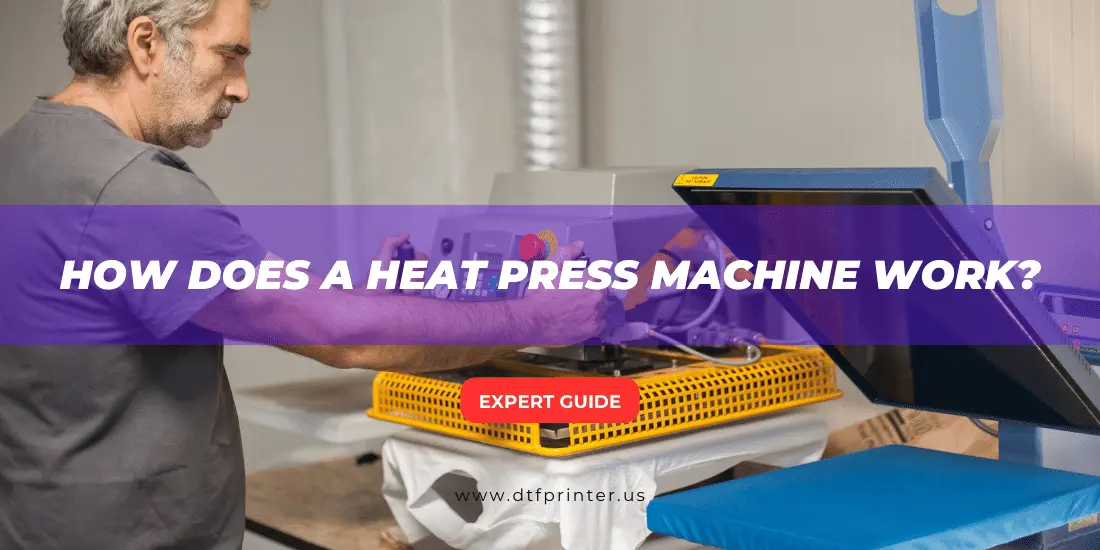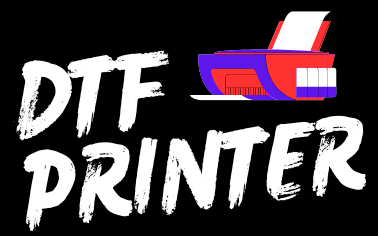
Always wondered how a heat press machine works and converts a simple fabric into a piece of artwork. Read until the end to learn about how does a heat press machine work and the secrets to creating vibrant and long-lasting designs on the right foot.
What is a Heat Press Machine?
The heat press is an iron-like machine. It consists of an upper and lower platen, a heating element, and a control panel. Heat press allows you to transfer a design on some plain or blank substrate, including t-shirts, mugs, or hats. So, whether you are using a DTF, sublimation, or any Eco-solvent print, the heat press machine is a necessary tool to put them on the substrate.
Type of heat press machine
It comes in different designs and configurations that allow specific types of applications. The commonly used heat press machines are

- Clamshell heat press
- Swing-away heat press
- Drawer heat press
How Does a Heat Press Machine Work?
The primary function of a heat press machine is to provide heat and pressure that facilitate the transfer process. It uses a unique combination of time, pressure, and temperature.
Sounds quite easy. Well, not. The real magic lies in providing the just right combination of these three factors. The too high or too low of any of these may result in imperfect transfer of image.
Let’s see how it comes together.
Step By Step Guide: How Does a Heat Press Machine Work
Here, we walk through the different steps of how the heat press machine works.
Materials Required
- Heat press machine
- Substrate
- Heat-resistant gloves and tape
- Designs(printed on transfer paper or vinyl)

Let’s start the process.
First of all, turn on the machine and allow it to preheat to the appropriate temperature according to the type of substrate.
Then, prepare your substrate, clean the area of transfer from dust and wrinkles, and lay it on a clean, flat surface.
Now position the design and place the transfer paper facing down on the substrate.
Note
Always secure the paper with heat-resistant tape, as it will prevent it from shifting during pressing.
After that, adjust the pressure according to the type and thickness of your material. Most heat press machines have a user manual that helps the user to conveniently set the pressure and other settings.
Now, wear heat-resistant gloves and carefully close the heat press. Remember: before closing, always ensure your design and transfer paper is in direct contact with the substrate. Also, cover the top of the transfer paper with butter paper as it protects the platen from accidentally burning heat transfer vinyl or paper.
Set the recommended time and pressure by following the manufacturer’s instructions that come with your material. Wait until the timer stops.
The machine also gives an audible signal when it completes the procedure. Lift the platen and wait for some minutes. Then, carefully remove or peel off the paper from the substrate while it is still hot. Inspect your design, whether it is completely transferred or not.
Troubleshooting And Tips While Using The Heat Press Machine
Here, we discuss some common issues that may arise during pressing. It is important to know about these issues and their solution so that you can smoothly complete your printing.
Uneven Transfers
Sometimes, your designs are unevenly transferred onto the transfer medium. The most common culprits in this situation are uneven distribution of heat and pressure. To resolve this issue, ensure the pressure is equally distributed and there are no cold spots on the element.
Peeling or Fading of Transfers
Peeling or fading of transfers may occur when subpar material and low temperature or time are used. To overcome this, use the right martial and recommended setting according to your material.
Ghosting
It must occur when the residue of the previous transfer is left on the platen or when the platen is not clean completely. To prevent this, ensure that the platen is free from debris and clean. You can also use a top cover on your transfer paper that keeps the platen free from residues during pressing.
Wrinkled Substrate
Wrinkles in the transfer substance overall affect the quality. So before starting the printing, always Pre-pressing the substrate as it eliminates the wrinkle and allows smooth transfer.
Burn Marks
This problem mostly occurs when the temperature and pressing time are too high. Check your press settings and adjust them accordingly to prevent scorching.
Conclusion
In short, understanding how does a heat press machine work is the key to unleashing the world of personalized creations. With the perfect blend of time, pressure, and using the right technique, this nifty device brings life to your imagination. So, go ahead and enter the world of heat press machines now, where creativity is the only constraint.

